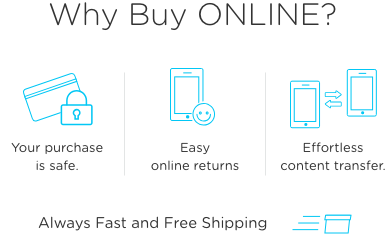
Navigating your teenager's relationship with technology can feel like sailing uncharted waters. As parents, we want to empower our teens with the benefits of technology while safeguarding them from its potential pitfalls. How do we give them access to conveniences like easy car navigation with the touch of a finger, yet protect them from dangers such as online bullying and predators?
Benefits of a staggered approach
The internet only became available to the general public in 1993. With technology so new, the possibilities seemed endless. You knew 10-20 minutes after that off-key dial-up melody filled the room, you could be sending emails to the other side of the globe. The online world was a Wild West. Society was still trying to understand the internet's potential, and few to no laws were in place to moderate it. Research on how digital content affects the brain didn't truly begin until many years later.
In fact, a 2022 study published in the International Journal of Environmental Research and Public Health detailed that "research linking technology use and changes in the brain is still in its infancy." Brain imaging has shown, though, that "intensive digital engagement can lead to changes in the brains of children and adolescents and affect brain functions, such as cognition, language, and visual perception."
The paper reviewed potential positive effects of digital technology in children and adolescents, but when dealing with something shown to have the power to alter developing brains, a slow and steady approach is wise.
Understanding the journey (it really is all about the climb)
For parents of tweens, the journey begins with introducing an entry-level smartphone. This stage marks a critical transition as children start to engage more independently online. Peer pressure to join social media platforms (but mom, all my friends are on Snapchat!) and exposure to potentially inappropriate content are real concerns. At this stage, the focus is on setting boundaries that limit access to mature content while gradually introducing responsible online behavior.
If you have a teen, you have seen first-hand how often they need to gain access to more sophisticated devices like smartphones and laptops for school and work. Their digital world is forever expanding. Teens also face pressures to conform to online norms like provocative selfies and cancel culture when engaging with a wider circle of peers. How can you give your child wider access to online content while maintaining close monitoring and guidance? This phase demands a more nuanced strategy.
A gradual approach
Step 1: Establish clear guidelines from the start
Setting clear guidelines is essential for building a conversation around online safety. For tweens, this may mean restricting access to certain apps or websites known for mature content. As teens mature, these guidelines can evolve into discussions around responsible online behavior, privacy settings, and digital footprints. Open communication is critical—letting teens know the reasoning behind rules helps them understand the importance of responsible usage. Explaining to your child why posting photos on a family vacation is dangerous (stalking and robbery) may help them see digital guidelines as protection, not a barrier.
Step 2: Introduce monitoring and privacy tools
Technology can be a powerful resource for ensuring the online safety of your tweens and teens. Tools like C Spire's Connect & Protect parental controls offer content filtering, time management, and location tracking. These features not only help enforce boundaries but also facilitate ongoing conversations around digital responsibility. Discuss with your child real-life scenarios where location tracking their phone is practical and sometimes even lifesaving. Emphasize that monitoring is about safety, not mistrust, reinforcing your role as a supportive guide in their digital journey.
Step 3: Encourage balance and offline activities
Digital independence shouldn't come at the expense of real-world experiences. Set aside time after school to assist your tween with homework and catch up with them about their day. Encourage your teen to pursue offline hobbies, sports, and social activities. A good tip is to set screen-free times for the whole family, such as during meals or before bedtime. You're teaching healthy life-long habits and fostering deeper family connections. When offline becomes the norm, teens learn that technology is a tool to enhance life, not dominate it.
Step 4: Foster critical thinking and online etiquette
Teach teens to think critically about the content they consume and share online by talking about the permanence and possible consequences of their online actions. Encourage empathy and respect in their interactions, emphasizing that digital behavior should mirror their real-life conduct. Would they feel comfortable expressing the same thoughts that they're typing out in person? How would they feel if they received a comment or DM like that? By instilling these values and reflective thinking early on, your child can navigate online challenges with confidence and integrity later as a teen.
Building a support network with other parents and educators can provide valuable insights and resources. Try sharing different methods for managing screen time, discussing online safety, and addressing everyday hurdles. Collaborative efforts can reinforce consistent messaging across your child's daily schedule—from home and school to work and social settings. It really does take a village.
C Spire supports parents like you
Teaching your teen digital independence requires a gradual, thoughtful approach. As parents, we don't want to shield our teens from technology. Instead, we want to equip them with the skills and values to be online safely and mindfully. By slowly implementing responsible smartphone use at an early age, we can allow our teens to harness the power of technology while preserving what matters most: their physical health, mental well-being, and future success.
Raising kids and teens in the internet era isn't easy. But you don't have to do it alone. As a part of C Spire and Osprey's Connect & Protect initiative, we provide expert-sourced articles and tips on navigating your family's online access together.
Check out our Connect and Protect plans designed for kids here.

















